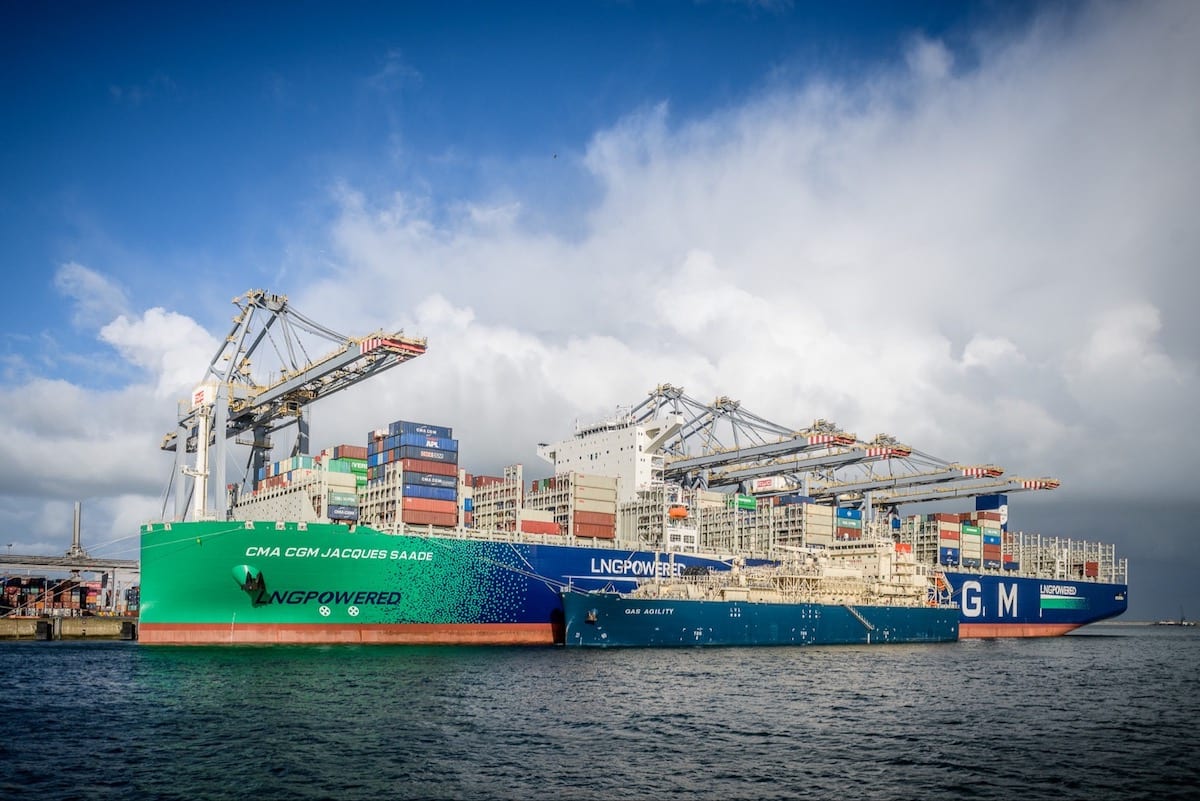grain elevators in the Port of Houston, file image (c) Rob Almeida/gCaptain
By Naomi Christie and Shruti Date Singh
Sept. 19 (Bloomberg) — Shipping companies probably will miss out on exports from the record U.S. grain harvest because the shale-oil boom is clogging up rail lines to ports.
While the U.S. will reap the most crops ever, fourth- quarter export cargoes will be 15 percent lower than last year, according to RS Platou Markets AS, a Norwegian bank specialized in shipping. Rates for Panamaxes, the most commonly used vessels for grains, averaged $7,574 a day this year, headed for the lowest level since at least 1999, Baltic Exchange data show.
The U.S. shale-oil boom means energy shipments are dominating rail networks at the expense of grains. The Association of American Railroads says crude moved by rail almost doubled last year. The bottlenecks may persist because the Energy Department is predicting the most oil output in 45 years in 2015.
“If you’re an owner, you’re banking on a bumper season of exports,” Erik Nikolai Stavseth, an analyst at Arctic Securities ASA in Oslo, whose recommendations on ship owners returned 22 percent in the past year, said by phone Sept. 10. “The fact you see a situation where grains don’t come to the port: that’s a negative surprise for the shipping market.”
Another Facet
Fourth-quarter freight swaps that traders use to bet on future rates fell 17 percent to about $9,215 a day this month, according to data from the Baltic Exchange in London. That’s below the $11,000 that Platou estimates they need to break even.
The largest publicly traded Panamax owner is Tianjin, China-based China Cosco, which has 69 in its fleet, Clarkson Plc data show. The company ships the most cargoes from the Gulf of Mexico, according to vessel-tracking data compiled by Bloomberg.
Panamax owners are also contending with the slowest growth in coal cargoes since 2009, according to Clarkson. Global shipments will advance 4 percent to 1.23 billion metric tons this year, the world’s largest shipbroker estimates. The fuel is the biggest source of demand for the ships, followed by grains.
While Panamaxes are getting fewer U.S. grain cargoes, demand is rising for tankers exporting diesel, gasoline and other fuels. U.S. exports of refined fuels rose 17 percent to 3.4 million barrels a day this year compared with the same period in 2013, Energy Department data show.
That’s helping to diminish a glut of capacity after the global tanker fleet doubled in the past decade while trade in oil products rose 64 percent, according to Clarkson data. Daily rates to Europe from the U.S. averaged $1,360 this year, from $2,560 in 2013, the broker’s data show.
Truck Diversions
Railroad congestion has been a problem for grain handlers, Arthur Neal, a deputy administrator for transportation and marketing at the U.S. Department of Agriculture, told a Senate committee during a hearing on Sept. 10. Since October 2013, the USDA has reported delays, missed shipments, backlogs and higher costs for railroad services for U.S. grain shippers, Neal testified.
Andersons Inc. will direct some grain to trucks and vessels to alleviate pressure on its rail cars, Hal Reed, chief operating officer of the Maumee, Ohio-based company, said by phone Sept. 8. Andersons repairs, sells, manages and leases a fleet of almost 22,000 railcars and locomotives.
“Railroads have been under pressure,” Steve Neelly, the vice president for grain merchandising and country elevator logistics at Inver Grove Heights, Minnesota-based farmer cooperative CHS Inc., said by phone Sept. 8. “The moment harvest starts, they will be behind.”
The rail delays in the U.S. could lead to ships awaiting cargo and congestion at terminals, something that normally boosts freight rates. Exporters will still ship their cargoes eventually, according to Burak Cetinok, a consultant at Hartland Shipping Services Ltd., a shipbroker in London.
Trade Growth
Trade is accelerating for iron ore and grains from other regions. Iron-ore cargoes will expand 10 percent to a record 1.3 billion tons this year, according to Clarkson. Fourth-quarter grain shipments from South America will jump to 40 million tons, from 26 million last year, and Black Sea loads will advance to 14 million tons from 13.6 million, Platou estimates.
There’s still a glut of vessels competing for grains. The order book for new Panamaxes stands at 33 percent of the existing fleet, more than any other class of dry-bulk ship, according to data from IHS Fairplay, a Coulsdon, England-based research company.
That won’t help owners as the record U.S. crop struggles to find its way to ports. The USDA forecasts production of corn and soybeans at a record 472.16 million tons in the harvest which begins this month, from 443 million tons last season.
Any shipping delays are “definitely going to be bad for dry-bulk,” said Sverre Bjorn Svenning, the Oslo-based director of research at Fearnley Consultants AS. “They have really good crops this year and should expect high exports.”
–With assistance from Whitney McFerron in London and Isaac Arnsdorf and Millie Munshi in New York.
Copyright 2014 Bloomberg.
Unlock Exclusive Insights Today!
Join the gCaptain Club for curated content, insider opinions, and vibrant community discussions.

 Join The Club
Join The Club













